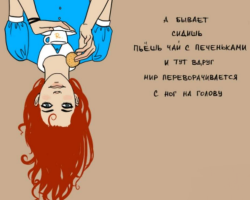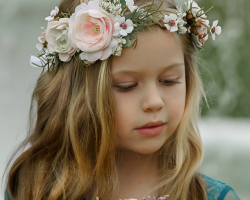This article provides an analysis of the picture “The end of winter. Noon".
Russian landscapes are displayed on the canvases of many famous artists. Their ability to sing the beauty of Russian land makes a valuable contribution to the history of art. Outstanding landscape painters include Konstantin Fedorovich Yuon. The whole creative path of the artist is accompanied by a folk style and typical colors.
Emphasizing the uniqueness of Russian life, the artist transfers the whole truth of life to his canvases. Juon’s paintings are distinguished by the freshness of the perception of the world. I would like to supplement his work with poetic lines or musical composition.
Arguments for essay on the picture of Juon “The end of winter. Noon"
One of the favorite topics of the artist was winter landscapes. The snow cover of the native land caused the most reverent experiences in it. In 1929, the artist painted a picture entitled “The End of winter. Noon". The winter landscape of the European part of Russia is taken as the basis of the image.
- This work is filled with light and optimistic mood. The picture emphasizes the raised spirit of people arising with the first spring rays of the sun. The world seems to wake up from winter hibernation and gets a new charge of energy.
- The combination of nature with human life refers to the picture to the impressionistic genre. The expressiveness of the elements of the first plan, the asymmetric arrangement of a wooden hut, fragments of individual episodes create a sensation of an accidentally seen scene in the viewer. By adding the characters to the canvas, Yuon does not focus on their faces. Its main task is to give movement and life to the picture.

- Konstantin Fedorovich repeatedly portrayed winter landscapes, but we will not see crystal white snow on any of them. The artist preferred to use a variety of color shades, and emphasized the whiteness of snow with the help of light. The whole nature of the picture is “the end of winter. Half ”” is filled with a bluish tint, which is especially expressive in the area of \u200b\u200bforest stands. Winter snow combines white-blue and yellowish colors. Sunny rays brighten up gray shades.
- If at the very beginning of winter artists depict fluffy snow caps, then here we see a sagging and loose snow layer. Thus, the author emphasizes that winter is inferior to the spring warmth. Despite some grayness, the snow clings to itself our views and acts in the central image of the landscape.
- The winter forest in the background has already dropped half of the snow -white outfits. The artist does not depict the sun, I emphasize the height of his radiance. In the bright blue, a transparent sky is not visible a single cloud. The height of the horizon gives the picture more light and air.
In all elements of the picture, the artist’s logical thinking is observed. Key elements are placed in such a way as to maintain the integrity of the landscape. The variety of details emphasizes the observation and taste of the artist. The picture is successful thanks to the thoughtful painstaking work of the author.
Against the background of the winter landscape, several guys with skis are depicted. Judging by the midday time, they only go for a walk to the forest. For children, snow opens many opportunities for pastime, so the children do not want to say goodbye to winter. Until spring has come, you need to have time to enjoy the snowy day off. The activity of skiers adds life to the picture of Juon. Allows us to feel the attitude of this day.

Not only children, but also poultry rejoice in beautiful weather. Lock snow allows them to get enough. They master the territory with particular importance after winter imprisonment. Their bright color and fussiness convey the nature of peasant everyday life. The image of a rooster in this picture is no coincidence. This bird is a messenger about the division of the day into daytime and night. In this work, the rooster marks the beginning of the transition period from winter to spring.
- The typicality of the Russian landscape is emphasized by endless open spaces and a small river characteristic of a small settlement. The majestic pine forest, located behind the hills, gives the image volume and depth.
- In the foreground depicts the main beauties of Russian nature - delicate birches and high stately Christmas trees. The juicy greens of the needles adds heat to the picture. The trees have already freed from snow caps and stretch the branches to the sunlight. Deep shadows in the snow emphasize the clarity of winter day. All depicted elements of nature are presented in a harmonious combination.
- On the left side of the picture, the artist portrayed a wooden hut. Snow slides tell us about a warm winter day. Warm brown colors at home give him comfort. Neatly folded firewood is associated with the heat of the Russian furnace. The rolled skiers are waiting for a warm mental atmosphere.
- The extreme placement of the house allows you to concentrate on the winter landscape. A wooden fence seems to divide the picture into two zones - in one of which a person’s life boils, and in the other the silent silence of the winter forest reigns. The image of a lonely house in Dali characterizes the area as the outskirts of the settlement. The image of people and animals characterizes the adversity of this land.
Despite the fact that nature is covered by a snow blanket, everything around is talking about the end of the harsh snow winter. In frosty weather, the rays of the sun give a special shine in the snow, and in the picture of Juon we see how the snow layer sags and acquires dullness. The traces left by man are filled with meltwood and in some places glimpse the first islands of the Earth. A little more and spring streams will call.

In the name of the picture, the artist focuses on the middle of the day. Such a time of day gives the landscape a special mood. The Slavs attached particular importance to such moments as noon and midnight. It was believed that this is a division of life into the past and future.
Thus, the author tried to emphasize the transition from one state of nature to another. Sunny rays fill the entire landscape with special energy. From an ordinary village house, it blows warm and comfort. The figures of people are presented with cheerful faces. You can easily imagine the sounds that reign in the atmosphere of this landscape.
According to the picture of Yuon, “The End of Winter. Half ”we observe the relationship of nature and man. Weather conditions adjust our plans and control our mood. Snow frosty winter slows down our rhythm of life. The onset of spring opens up new opportunities for us. The work fully reflects the change of seasons. The cheerful landscape symbolizes the continuation of life.
Observing the picture, you are involuntarily transferred to its atmosphere and inhale the winter-spring air inhaled with full chest. From the abundance of sunlight, I want to squint. Snowworms seem to melt before our eyes. The weather has a walk and active pastime. The artist’s skill opens before us a new fairy -tale world. It evokes internal awakening and revival from admiring the beauty of nature. The admiration of the picture causes an irresistible desire to look for confirmation of the onset of spring.
Contemporaries of Yuon noted that there is a carnival mood in this work. Art critic D. Argin emphasized the predisposition of the landscape painter: "Yuon is faithful to the great tradition of landscape painting, which managed to find clear and pure sounds for native nature". The beauty and festivity of the picture reflects the artist’s personal attitude to the beauty of Russia. Yuon compared his paintings with songs about life.
Thanks to the artist’s successful and happy life, we have the opportunity to observe the result of his fruitful activity. His works are attracted by love for nature. Despite the use of cold shades, it blows from the picture an optimistic mood and juicy colors. For such an enthusiastic image of native nature, Juon was called the poet of the Russian people.

The landscape painter gave us a variety of shades of winter nature. His art can be characterized as bright and sunny. Juon's picture “The end of winter. Half ”causes a lot of positive impressions, amazes with its light solution, inspires bright thoughts. After viewing this landscape, there is a desire to get acquainted with the other numerous works of the artist.






